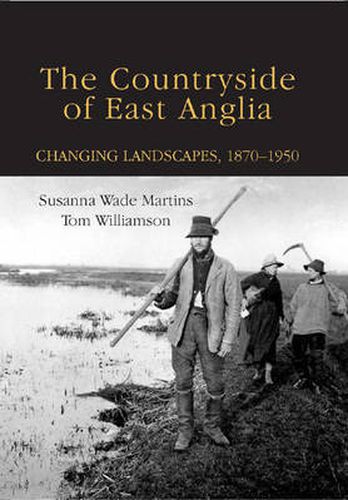Readings Newsletter
Become a Readings Member to make your shopping experience even easier.
Sign in or sign up for free!
You’re not far away from qualifying for FREE standard shipping within Australia
You’ve qualified for FREE standard shipping within Australia
The cart is loading…






The countryside we enjoy today has a very long history, but many of its key features were created in the relatively recent past - as this book shows. It investigates how the landscape of a particular area of England, East Anglia,developed in the period of the so-called great depression, beginning in 1870, and the phase of wartime intensification which succeeded it after 1930. It considers how fields, farms and villages developed in this period of dramatic agricultural change; examines the fate of country houses, gardens, and landed estates; and looks in some detail at the character of habitat change - at the development of hedges, woods, wetlands and heaths. It also considers hownew kinds of landscape, ranging from vast conifer plantations to holiday resorts, came into existence. The period of the ‘great depression’ was not simply one of stasis and decay. It was instead a time in which there were fundamental changes in the rural environment, changes which were not always beneficial to wildlife and biodiversity.
This book will be essential reading for all those interested in the history of the countryside [in East Angliaand beyond], landscape history, agricultural history, and historical ecology.
$9.00 standard shipping within Australia
FREE standard shipping within Australia for orders over $100.00
Express & International shipping calculated at checkout
The countryside we enjoy today has a very long history, but many of its key features were created in the relatively recent past - as this book shows. It investigates how the landscape of a particular area of England, East Anglia,developed in the period of the so-called great depression, beginning in 1870, and the phase of wartime intensification which succeeded it after 1930. It considers how fields, farms and villages developed in this period of dramatic agricultural change; examines the fate of country houses, gardens, and landed estates; and looks in some detail at the character of habitat change - at the development of hedges, woods, wetlands and heaths. It also considers hownew kinds of landscape, ranging from vast conifer plantations to holiday resorts, came into existence. The period of the ‘great depression’ was not simply one of stasis and decay. It was instead a time in which there were fundamental changes in the rural environment, changes which were not always beneficial to wildlife and biodiversity.
This book will be essential reading for all those interested in the history of the countryside [in East Angliaand beyond], landscape history, agricultural history, and historical ecology.